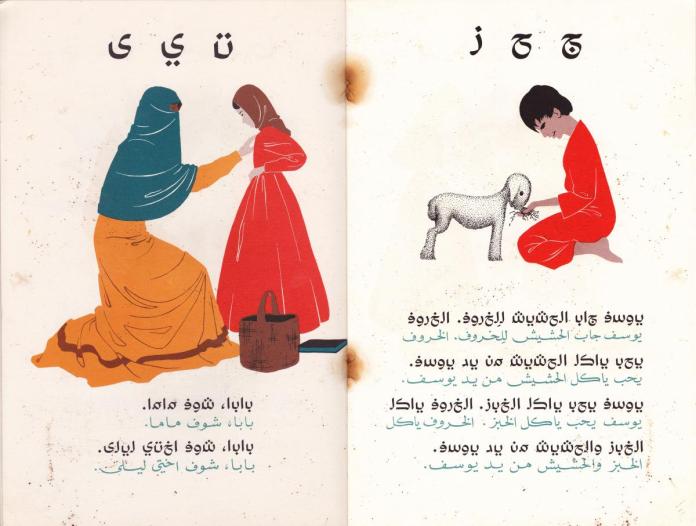In 1932 Lebanese architect Nasri Khattar developed a simplified Arabic script for printing and to aid literacy:
Unified Arabic (UA) is basically a set of 30 letterforms, one for each letter of the Arabic alphabet, plus hamza and lam alef, eliminating the variant forms that make reading and writing Arabic difficult for beginners.

Sample pages from the children’s book ‘Shouf Baba Shouf’. The UA forms are placed next to the traditional ones for direct comparison and learning.
The large number of Arabic letter variants made typing Arabic immensely complicated. Khattar realised that matters could be greatly simplified by distilling the hundreds of variant shapes into their most characteristic forms. The letters are designed to be representative of the streamlined spirit of Western civilisation: quick, mechanised and labour saving, similar to Latin type forms and proportions, which Khattar acknowledged as one of his inspirations.
In 1986, Nasri Khattar was nominated for the Nobel Peace Prize for his lifelong Unified Arabic project and its implications for the fields of linguistics, literacy, printing, computers, and telecommunications. He was probably the only designer / typographer considered for the prestigious award.
In one sense, new technologies made Unified Arabic obsolete before it could overcome the massive obstacles opposing its adoption. But from another point of view, the issues that led to its development still demand resolution.
Fighting Illiteracy With Typography by Yara Khoury Nammour (via).
See also
- Works That Work is interested in the impact of design and forgotten ideas worth a second look.
- Wired: Why It’s So Hard to Design Arabic Typefaces
The problem is that Arabic is an incredibly complicated language, and despite its ranking as the fifth most spoken language worldwide, there’s a shortage of typographers with a native understanding of the script. [Peter] Bil’ak says this is because there are few specialized typography courses available in the Middle East. - ZXX — an experimental typeface designed by Sang Mun to raise awareness of surveillance issues.
- Recovering The Doves Type from the bottom of the Thames
- Bibliotheca: The Bible, in four modern volumes

